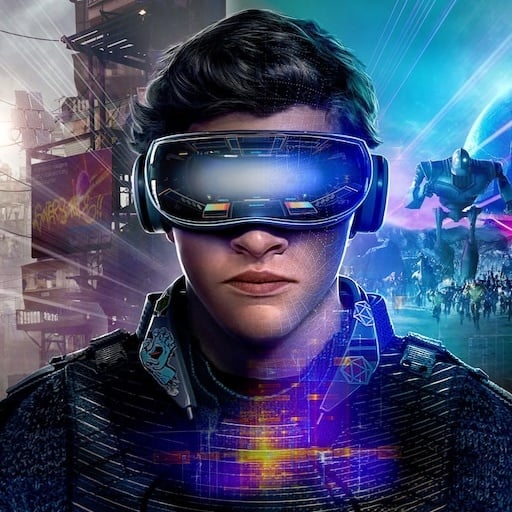The Three Wrong Assumptions of VR Gaming
VR’s origin in hardcore gaming culture resulted in VR game development being underpinned by three false assumptions about the types of experiences that would (or could) make VR gaming successful. These assumptions were that gamers wanted graphical realism and fast-paced violence, and that they didn’t want casual play experiences.
Over the past three decades, “AAA” game development—a term used in the games industry to signify high-budget games distributed by large publishers—has driven the massive expansion of computing power in consumer gaming devices. Particularly in PC gaming, part of what made a game hardcore was the computing power needed to run it at “maximum settings,” with the most detailed and textured graphics available.
The enormous advances in game graphics over the past 30 years contributed to significant improvements in player experience. This graphical realism became closely entwined with the concept of immersion.
For VR—which sold itself as “ truly immersive”—this meant that hardcore gamers expected graphically real VR experiences. But VR environments need to be rendered smoothly in order to not cause motion sickness, something made harder by a commitment to graphical realism. This aspiration saddling VR games with a nearly impossible compute burden.
One game that sidesteps this issue—and has subsequently become one of the most celebrated VR games—is Superhot VR, an action puzzle with basic graphics in which enemy avatars and their bullets only move when the player moves their body.
Play begins with the player surrounded by attacking enemies, with death immediately returning the player to the starting moment. Play thus involves discovering what sequence of movements and attacks can get the player out of this perilous situation. It’s a learning curve reminiscent of the 2014 science-fiction film Edge of Tomorrow, in which a hapless soldier (played by Tom Cruise) quickly becomes an elite, superhuman soldier while stuck in a time loop.
The attention in Superhot’s gameplay is not to visual fidelity or sensory immersion, but what genuinely makes VR distinct: embodiment. The effect of its conceit is a superhuman-like control of time manipulation, with players deftly contorting their bodies to evade slow moving bullets while dispatching enemies with an empowering ease. Superhot VR provides an experience worth donning a headset for, and it consequently remains one of VR gaming’s top selling titles eight years after its release.
When Immersion Is Too Much
John Carmack’ Doom and Wolfenstein, on which VR’s gaming fantasy was based, are first-person shooters that closely map to hardcore gaming ideals. They’re hyperviolent, fast-paced, and difficult; they have a limited focus on story; and they feature some of the goriest scenes in games. In the same way that VR gaming has been detrimentally entwined with the pursuit of photorealism, VR gaming has been co-opted by these hardcore values that ultimately limit the medium. They lack mainstream appeal and valorise experiences that simply aren’t as appealing in VR as it is in a flat screen.
In a discussion around the design of Half Life: Alyx—one of the only high-budget VR-only games—designers Greg Coomer and Robin Walker explain that VR changes the way that people interact with virtual environments. As Coomer says, “people are slower to traverse space, and they want to slow down and be more interactive with more things in each environment. It has affected, on a fundamental level, how we’ve constructed environments and put things together.” Walker adds that the changes aren’t “because of some constraint around how they move through the world, it’s just because they pay so much more attention to things and poke at things.” Environments in VR games are much denser; on PC they feel small, but in VR they feel big.
This in part explains why few games originally designed for flat screens and “ported” to VR have been successful. The rapidly paced hyperviolence best characterized by Doom is simply sensory overload in VR, and the “intensity of being there”—one of Carmack’s aspirations—is unappealing. In VR, unrelenting games are unpleasurable: Most of us aren’t that coordinated, and we can’t play for extended periods of time in VR. It’s physically exhausting.
Casual Virtual Reality?
Beat Saber is a prime example of a game that might be derided as casual, if it weren’t the bestselling VR game of all time. Beat Saber is a music rhythm-matching game, a hybrid of Dance Dance Revolution, Guitar Hero, and Fruit Ninja. In time with electronic music, a playlist of red or blue boxes streams towards the player. Armed with two neon swords—commonly described as light sabers—the player must strike these boxes in the correct direction, denoted by a subtle white arrow.
Striking a box releases a note in the accompanying song, resulting in an experience that is half playing an instrument, and half dance. Well patterned songs create sweeping movements and rhythms reminiscent of the exaggerated gestures used by Nintendo Wii players.
Beat Saber’s appeal is immersion-through-embodiment, also achieved by disregarding VR’s gaming fantasy of hardcore experiences. With each song being, well, song length, Beat Saber supports a shorter, casual mode of engagement that isn’t pleasurable because it is difficult or competitive, but simply because playing a song feels good.
Gaming in VR has been subjected to a vicious self-reinforcing cycle wherein VR developers create hardcore games, which appeal to a certain kind of hardcore gamer user, whose purchasing habits in turn drive further development of those kinds of games, and not others. Attempts to penetrate this feedback loop have been met with the hostility of VR’s online gaming culture, appropriated from gamer culture at large.
As a result, the scope of VR games remains narrow, and oblivious to the kinds of games that might take VR to its billionth user. Maybe then, the one thing that could save VR gaming is the one possibility that VR enthusiasts decried the most when Facebook purchased Oculus in 2014: Farmville VR.
As much as I love hardcore type shooters and things like blade and sorcery, I will admit my absolute favorite game is still walkabout mini golf, and I’ve been playing around with grab, and I gotta say it’s a blast. Simple graphics can be a blast if the mechanics are fun
I love walkabout so much. There’s so much packed into every map that 4 bucks feels like a steal. Also great for drunk group play.
It’s even cheaper than a round of actual minigolf! (Plus the real life places don’t like it when you take their balls lol) but yes! I even got the cosmetic pack from them (though I never do anything with cosmetics) just because I love supporting the devs.
My favorite games are sword fighting games of all sorts. I would say the more realistic physics the better and better graphics is a plus with realistic being the goal down the road i guess. My last is death duel VR.
Recently i’ve been loving subside wich is an ultra realistic diving game that just looks and feels amazing. The slow exploration to find each and every little hidden treasure is great.
Have you tried blade and sorcery? That’s the only sword fighting game I had and it’s… visceral. Definitely a fun game especially now that it released into 1.0 and has a progression/story mode!
Yes, i’ve been playing blade and sorcery since day 1 of early access many years ago. I like it. I just played too much XD
I really enjoyed many games with a whide range of fun or realistic melee combat like broken edge, gladius, gorn, grimlord, hellsplit arena, karnage chronicles, legendary tales, soul scathe, tales of glory, until you fall and death duel VR.
I always want more and i’m looking forward to behemoth wich should have pretty good combat. And talking of behemoth it’s made by the devs of walking dead: saints and sinners but i haven’t played enough of that one to say i really enjoy the combat. But i will. I just re-downloaded right now after going through my library.
Right i also have on the meta side the star wars games wich had pretty fun lightsaber combat and of course asgard’s wrath 1 and 2.
I can’t imagine playing through a 12 hour long game in VR. Pop it on, hop in a sim for an hour every few months or b&s, that’s the spirit.
I like flying spaceships.




